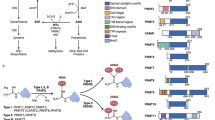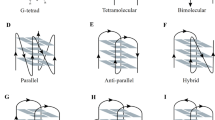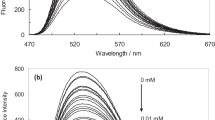Abstract
Methyl damage to DNA bases is common in the cell nucleus. O6-alkylguanine-DNA alkyl transferase (AGT) may be a promising candidate for direct damage reversal in methylated DNA (mDNA) at the O6 point of the guanine. Indeed, atomic-level investigations in the contact region of AGT-DNA complex can provide an in-depth understanding of their binding mechanism, allowing to evaluate the silico-drug nature of AGT and its utility in removing methyl damage in DNA. In this study, molecular dynamics (MD) simulation was utilized to examine the flipping of methylated nucleotide, the binding mechanism between mDNA and AGT, and the comparison of binding strength prior and post methyl transfer to AGT. The study reveals that methylation at the O6 atom of guanine weakens the hydrogen bond (H-bond) between guanine and cytosine, permitting for the flipping of such nucleotide. The formation of a H-bond between the base pair of methylated nucleotide (i.e., cytosine) and the intercalated arginine of AGT also forces the nucleotide to rotate. Following that, electrostatics and van der Waals contacts as well as hydrogen bonding contribute to form the complex of DNA and protein. The stronger binding of AGT with DNA before methyl transfer creates the suitable condition to transfer methyl adduct from DNA to AGT.















Similar content being viewed by others
Data availability
All the data that are used to produce the figures/charts in this paper are available from the corresponding author in case reproduction is needed.
References
Bont, D.R., Larebeke, N.L.: Endogenous DNA damage in humans: a review of quantitative data. Mutagenesis 19, 169–185 (2004). https://doi.org/10.1093/mutage/geh025
Jackson, S.P., Bartek, J.: The DNA-damage response in human biology and disease. Nature 461, 1071–1078 (2009). https://doi.org/10.1038/nature08467
Chatterjee, N., Walker, G.C.: Mechanisms of DNA damage, repair, and mutagenesis. Environ. Mol. Mutagen. 58, 235–263 (2017). https://doi.org/10.1002/em.22087
Drabløs, F., Feyzi, E., Aas, P.A., Vaagbø, C.B., Kavli, B., Bratlie, M.S., Peña-Diaz, J., Otterlei, M., Slupphaug, G., Krokan, H.E.: Alkylation damage in DNA and RNA-repair mechanisms and medical significance. DNA Repair 3, 1389–1407 (2004). https://doi.org/10.1016/j.dnarep.2004.05.004
Fu, D., Calvo, J.A., Samson, L.D.: Balancing repair and tolerance of DNA damage caused by alkylating agents. Nat. Rev. Cancer 12, 104–120 (2012). https://doi.org/10.1038/nrc3185
Ames, B.N., Shigenaga, M.K., Gold, L.S.: DNA lesions, inducible DNA repair, and cell division: three key factors in mutagenesis and carcinogenesis. Environ. Healt. Pers. 101, 35–44 (1993). https://doi.org/10.1289/ehp.93101s535
Rydberg, B., Lindahl, T.: Nonenzymatic methylation of DNA by the intracellular methyl group donor S-adenosyl-L-methionine is a potentially mutagenic reaction. EMBO J. 1, 211–216 (1982). https://doi.org/10.1002/j.1460-2075.1982.tb01149.x
Liu, L., Gerson, S.L.: Targeted modulation of MGMT: clinical implications. Clin. Cancer Res. 12, 328–331 (2006). https://doi.org/10.1158/1078-0432.CCR-05-2543
Paulsen, M., Ferguson-Smith, A.C.: DNA methylation in genomic imprinting, development, and disease. J. Pathology 195, 97–110 (2001). https://doi.org/10.1002/path.890
Daniels, D.S., Woo, T.T., Luu, K.X., Noll, D.M., Clarke, N.D., Pegg, A.E., Tainer, J.A.: DNA binding and nucleotide flipping by the human DNA repair protein AGT. Nat. Struc. Mol. Biol. 11, 714–720 (2004). https://doi.org/10.1038/nsmb791
Kyrtopoulos, S.A., Anderson, L.M., Chhabra, S.K., Souliotis, V.L., Pletsa, V., Valavanis, C., Georgiadis, P.: DNA adducts and the mechanism of carcinogenesis and cytotoxicity of methylating agents of environmental and clinical significance. Cancer Detect. Preven. 21, 391–405 (1997)
Maser, R.S., DePinho, R.A.: Connecting chromosomes, crisis, and cancer. Science 297, 565–569 (2002). https://doi.org/10.1126/science.297.5581.565
Priyakumar, U.D., MacKerell, A.D.: Computational approaches for investigating base flipping in oligonucleotides. Chem. Rev. 106, 489–505 (2006). https://doi.org/10.1021/cr040475z
Crone, T.M., Goodtzova, K., Pegg, A.E.: Amino acid residues affecting the activity and stability of human O6-alkylguanine-DNA alkyltransferase. Mut. Res./DNA Rep. 363, 15–25 (1996). https://doi.org/10.1016/0921-8777(95)00058-5
Kelley, M.R., Fishel, M.L.: DNA repair proteins as molecular targets for cancer therapeutics. Anti-Cancer Agen. Med. Chem. 8, 417–425 (2008). https://doi.org/10.2174/187152008784220294
Hu, J., Ma, A., Dinner, A.R.: A two-step nucleotide-flipping mechanism enables kinetic discrimination of DNA lesions by AGT. Proc. Nat. Acad. Sci. U.S.A. 105, 4615–4620 (2008). https://doi.org/10.1073/pnas.070805810
Ali, R.B., Teo, A.K.-C., Oh, H.K., Chuang, L.S.-H., Ayi, T.-C., Li, B.F.L.: Implication of localization of human DNA repair enzyme O6-methylguanine-DNA methyltransferase at active transcription sites in transcription-repair coupling of the mutagenic O6-methylguanine lesion. Mol. Cell. Biol. 18, 1660–1669 (1998). https://doi.org/10.1128/MCB.18.3.1660
Duguid, E.M., Rice, P.A., He, C.: The structure of the human AGT protein bound to DNA and its implications for damage detection. J. Mol. Biol. 350, 657–666 (2005). https://doi.org/10.1016/j.jmb.2005.05.028
Jena, N.R., Shukla, P.K., Jena, H.S., Mishra, P.C., Suhai, S.: O6-methylguanine repair by O6-alkylguanine-DNA alkyltransferase. J. Phys. Chem. B 113, 16285–16290 (2009). https://doi.org/10.1021/jp907836w
Tessmer, I., Fried, M.G.: Insight into the cooperative DNA binding of the O6-alkylguanine DNA alkyltransferase. DNA Repair 20, 14–22 (2014). https://doi.org/10.1016/j.dnarep.2014.01.006
Koirala, R.P., Khanal, S.P., Shiwakoti, S., Adhikari, N.P.: Intermolecular interaction of hTHYN1 protein with double methylated DNA at 5m-cytosine nucleotide. J. Inst. Sci. Tech. 25, 37–44 (2020). https://doi.org/10.3126/jist.v25i1.29444
Izrailev, S., Crofts, A.P., Berry, E.A., Schulten, K.: Steered molecular dynamics simulation of the Rieske subunit motion in the cytochrome bc1 complex. Biophys. J. 77, 1753–1768 (1999). https://doi.org/10.1016/S0006-3495(99)77022-0
Phillips, J.C., Braun, R., Wang, W., Gumbart, J., Tajkhorshid, E., Villa, E., Chipot, C., Skeel, R.D., Kale, L., Schulten, K.: Scalable molecular dynamics with NAMD. J. Comput. Chem. 26, 1781–1802 (2005). https://doi.org/10.1002/jcc.20289
Tubbs, J.L., Pegg, A.E., Tainer, J.A.: DNA binding, nucleotide flipping, and the helix-turn-helix motif in base repair by O6-alkylguanine-DNA alkyltransferase and its implications for cancer chemotherapy. DNA Repair 6, 1100–1115 (2007). https://doi.org/10.1016/j.dnarep.2007.03.011
Koirala, R.P., Pokhrel, R., Baral, P., Tiwari, P.B., Chapagain, P.P., Adhikari, N.P.: Structural insights into the repair mechanism of AGT for methyl-induced DNA damage. Biol. Chem. 402, 1203–1211 (2021). https://doi.org/10.1515/hsz-2021-0198
Mattossovich, R., Merlo, R., Miggiano, R., Valenti, A., Perugino, G.: O6-alkylguanine-DNA alkyltransferases in microbes living on the edge: from stability to applicability. Int. J. Mol. Sci. 21, 2878 (2020). https://doi.org/10.3390/ijms21082878
Daniels, D.S., Clifford, D.M., Arvai, A.S., Kanugula, S., Pegg, A.E., Tainer, J.A.: Active and alkylated human AGT structures: a novel zinc site, inhibitor and extrahelical base binding. EMBO J. 19, 1719–1730 (2000). https://doi.org/10.1093/emboj/19.7.1719
Sedgwick, B.: Repairing DNA-methylation damage. Nat. Rev. Mol. Cell Biol. 5, 148–157 (2002). https://doi.org/10.1038/nrm1312
Berman, H.M., Westbrook, J., Feng, Z., Gilliland, G., Bhat, T.N., Weissig, H., Shindyalov, I.N., Bourne, P.E.: Protein Data Bank. Nucleic Acids Res. 28, 235–242 (2000). https://doi.org/10.1093/nar/28.1.235
Lee, J., Cheng, X., Swails, J.M., Yeom, M.S., Eastman, P.K., Lemkul, J.A., Wei, S., Buckner, J., Jeong, J.C., Qi, Y., Jo, S., Pande, V.S., Case, D.A., Brooks, C.L., III., MacKerell, A.D., Jr., Klauda, J.B., Im, W.: CHARMM-GUI input generator for NAMD, GROMACS, AMBER, OpenMM, and CHARMM/OpenMM simulations using the CHARMM36 additive force field. J. Chem. Theory Comput. 12, 405–413 (2016). https://doi.org/10.1021/acs.jctc.5b00935
Huang, J., Rauscher, S., Nawrocki, G., Ran, T., Feig, M., De Groot, B.L., Grubmüller, H., MacKerell, A.D.: CHARMM36m: an improved force field for folded and intrinsically disordered proteins. Nat. Methods 14, 71–73 (2017). https://doi.org/10.1038/nmeth.4067
Harvey, M.J., Giupponi, G., Fabritiis, G.D.: ACEMD: accelerating biomolecular dynamics in the microsecond time scale. J. Chem. Theory Comput. 5, 1632–1639 (2009). https://doi.org/10.1021/ct9000685
Bhandarkar, M., Bhatele, A., Bohm, E., Brunner, R., Buelens, F., Chipot, C., Dalke, A., Dixit, S., Fiorin, G., Freddolino, P., Grayson, P., Gullingsrud, J., Gursoy, A., Hardy, D., Harrison, C., Hénin, J., Humphrey, W., Hurwitz, D., Krawetz, N., Kumar, S., Kunzman, D., Lee, C., Mei, C., Nelson, M., Phillips, J., Sarood, O., Shinozaki, A., Zheng, G., Zhu, F.: NAMD user’s guide. University of Illinois and Beckman Institute, Urbana, IL (2003)
Martínez, L., Polikarpov, I., Skaf, M.S.: Only subtle protein conformational adaptations are required for ligand binding to thyroid hormone receptors: simulations using a novel multipoint steered molecular dynamics approach. J. Phys. Chem. B 112, 10741–10751 (2008). https://doi.org/10.1021/jp803403c
Gullingsrud, J.R., Braun, R., Schulten, K.: Reconstructing potentials of mean force through time series analysis of steered molecular dynamics simulations. J. Comput. Phys. 151, 190–211 (1999). https://doi.org/10.1006/jcph.1999.6218
Lindahl, T., Demple, B., Robins, P.: Suicide inactivation of the E. coli O6-methylguanine-DNA methyltransferase. EMBO J. 1, 1359–1363 (1982). https://doi.org/10.1002/j.1460-2075.1982.tb01323.x
Moore, M.H., Gulbis, J.M., Dodson, E.J., Demple, B., Moody, P.C.: Crystal structure of a suicidal DNA repair protein: the Ada O6-methylguanine-DNA methyltransferase from E. coli. EMBO J. 13, 1495–1501 (1994). https://doi.org/10.1002/j.1460-2075.1994.tb06410.x
Wade, R.C., Goodford, P.J.: The role of hydrogen-bonds in drug binding. Prog. Clinic. Biol. Research 289, 433–444 (1989)
Koirala, R.P., Bhusal, H.P., Khanal, S.P., Adhikari, N.P.: Effect of temperature on transport properties of cysteine in water. AIP Advan. 10, 025122 (2020). https://doi.org/10.1063/1.5132777
Cherstvy, A.G.: Electrostatic interactions in biological DNA-related systems. Phys. Chem. Chem. Phys. 13, 9942–9968 (2011). https://doi.org/10.1039/C0CP02796K
DiStasio, R.A., Gobre, V.V., Tkatchenko, A.: Many-body van der Waals interactions in molecules and condensed matter. J. Phys. Conden. Mat. 26, 213202 (2014). https://doi.org/10.1088/0953-8984/26/21/213202
Pantha, N., Belbase, K., Adhikari, N.P.: First-principles study of the interaction of hydrogen molecular on Na-adsorbed graphene. Appl. Nanosci. 5, 393–402 (2015). https://doi.org/10.1007/s13204-014-0329-y
Matthew, J.B., Ohlendorf, D.H.: Electrostatic deformation of DNA by a DNA-binding protein. J. Biol. Chem. 260, 5860–5862 (1985)
Yunta, M.J.: It is important to compute intramolecular hydrogen bonding in drug design. Am. J. Model. Optim. 5, 24–57 (2017). https://doi.org/10.12691/ajmo-5-1-3
Zou, X., Ma, W., Solov’Yov, I.A., Chipot, C., Schulten, K.: Recognition of methylated DNA through methyl-CpG binding domain proteins. Nucleic Acids Res. 40, 2747–2758 (2012). https://doi.org/10.1093/nar/gkr1057
Pathak, R.K., Gupta, A., Shukla, R., Baunthiyal, M.: Identification of new drug-like compounds from millets as Xanthine oxidoreductase inhibitors for treatment of hyperuricemia: a molecular docking and simulation study. Comput. Biol. Chem. 76, 32–41 (2018). https://doi.org/10.1016/j.compbiolchem.2018.05.015
Patel, J.S., Berteotti, A., Ronsisvalle, S., Rocchia, W., Cavalli, A.: Steered molecular dynamics simulations for studying protein-ligand interaction in cyclin-dependent kinase 5. J. Chem. Inform. Model. 54, 470–480 (2014). https://doi.org/10.1021/ci4003574
Mai, S.L., Binh, K.M.: Steered molecular dynamics-a promising tool for drug design. Current Bioinform. 7, 342–351 (2012). https://doi.org/10.2174/157489312803901009
Acknowledgements
We sincerely thank Professor Alexander D. MacKerell Jr from Computer-Aided Drug Design Center, School of Pharmacy, University of Maryland, USA for providing force field parameters for methylated residues. The authors acknowledge support from the Research Coordination and Development Council (RCDC) of Tribhuvan University Grants number TU-NPAR-077/78-ERG 14.
Author information
Authors and Affiliations
Contributions
Rajendra Prasad Koirala conducted the research work under the supervision of Narayan Prasad Adhikari.
Corresponding author
Ethics declarations
Ethical approval
This is a theoretical work. The work is not intended by any financial or any other personal interest; rather it is solely research-motivated.
Informed consent
Both authors agree to submit and publish this article in the Journal of Biological Physics.
Conflict of interest
The authors declare no competing interests.
Additional information
Highlights
• Triple hydrogen bonds of guanine with cytosine is reduced to a double hydrogen bonds due to methylation at O6 atom, which facilitates to flip out the methylated guanine.
• Hydrogen bonding, electrostatic and van der Waals interaction basically contribute to bind at the interfacial region of DNA and AGT.
• Unbinding force is greater in mDNA-AGT complex than the DNA-mAGT that exhibits the degradation the binding strength after methylation repair in DNA.
Rights and permissions
Springer Nature or its licensor (e.g. a society or other partner) holds exclusive rights to this article under a publishing agreement with the author(s) or other rightsholder(s); author self-archiving of the accepted manuscript version of this article is solely governed by the terms of such publishing agreement and applicable law.
About this article
Cite this article
Koirala, R.P., Adhikari, N.P. Base flipping mechanism and binding strength of methyl-damaged DNA during the interaction with AGT. J Biol Phys 50, 71–87 (2024). https://doi.org/10.1007/s10867-023-09649-9
Received:
Accepted:
Published:
Issue Date:
DOI: https://doi.org/10.1007/s10867-023-09649-9




